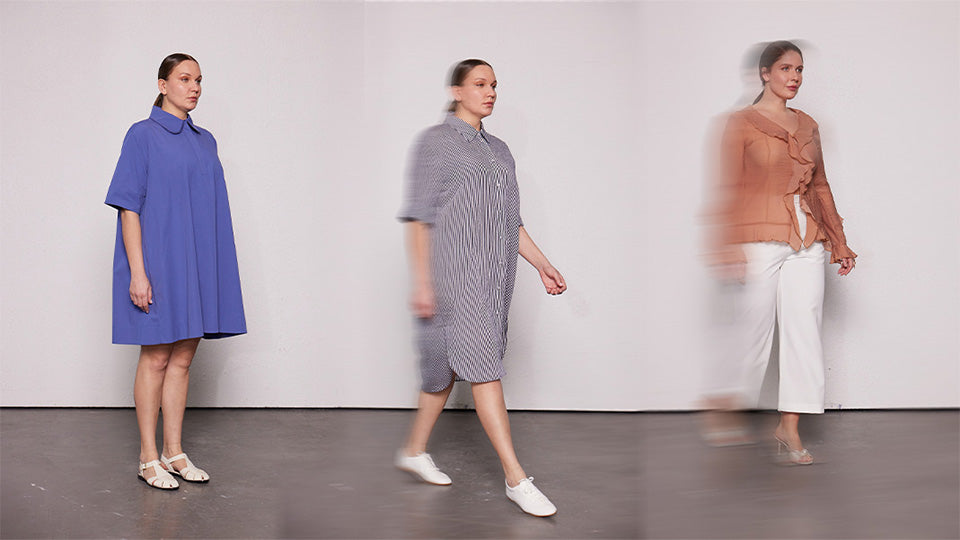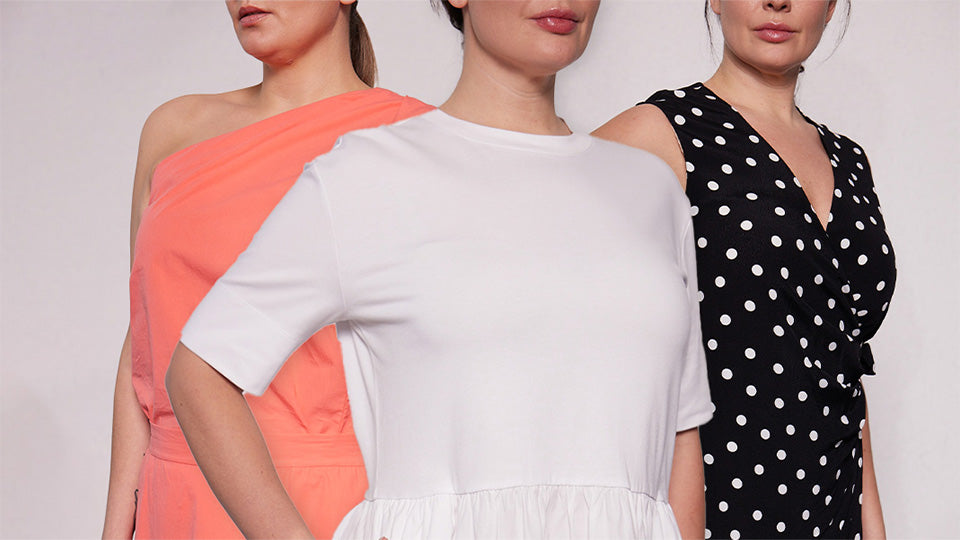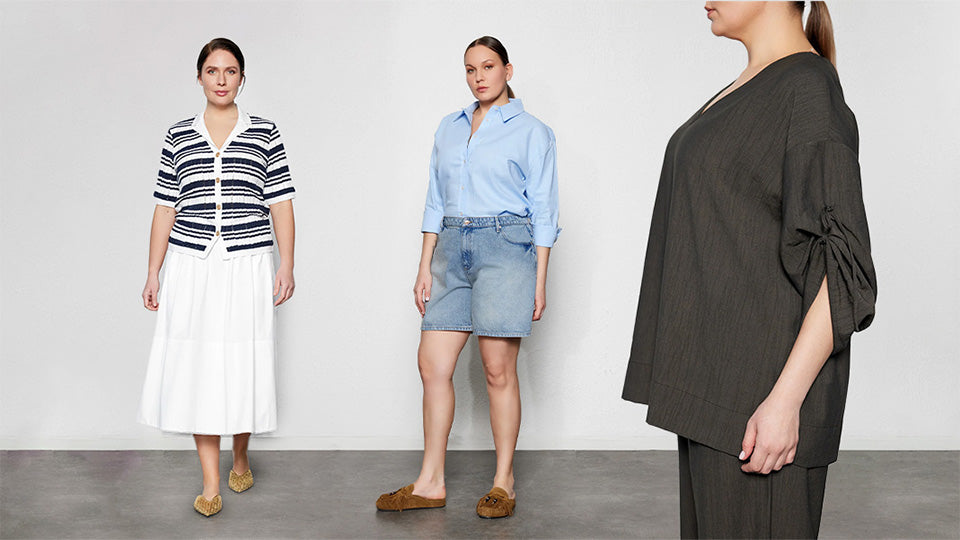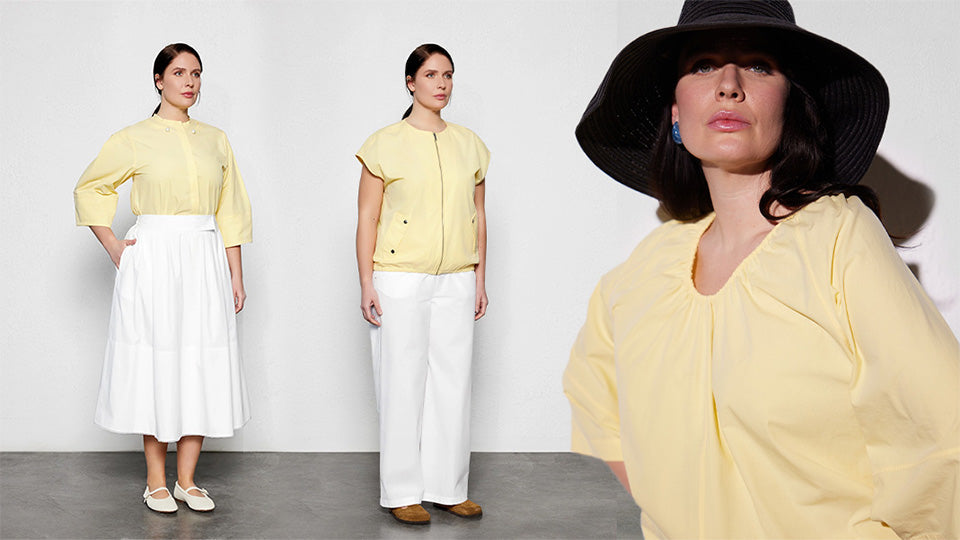Choosing the right clothing with a size chart is one of the most important aspects to consider when shopping for clothes. Especially during online shopping, you can make accurate decisions using the size chart by measuring your bust, waist, and hips. Oversized or undersized plus-size blouses, shirts, pants, or an incorrectly chosen jacket can be inconvenient. To avoid this confusion and hassle, you can shop by paying attention to selecting the right clothing using a size chart. So how should you choose the right clothing with a size chart? Let’s explore together.
How to Choose the Right Clothing with a Size Chart
The size chart is examined in two categories: upper and lower garments. You can determine the most suitable size by using the data on charts that include key areas like bust, waist, and hips. When ordering pants, sizes from 42 to 50 are available. You can match your size and measurements using the data in the chart.
During periods when you gain or lose weight, there may be changes in the cm values in the size chart. Therefore, at such times, make sure of your current measurements and then use the size chart accordingly. You can decide on sizes like L, XL, XXL, and XXXL for upper garments by referring to the chart, which provides clear information on bust, waist, and hips.
Women’s Size Chart
|
Clothing Size |
Bust (cm) |
Waist (cm) |
Hips (cm) |
|
40 (M) - 42 |
90-97 |
75-82 |
99-104 |
|
44 (L) - 46 |
98-107 |
83-93 |
105-112 |
|
48 (XL) - 50 |
108-119 |
94-106 |
113-121 |
|
52 (XXL) - 54 |
120-131 |
107-119 |
122-132 |
Women’s Pants Size Chart
|
Size |
Waist (cm) |
Hips (cm) |
|
42 |
84 |
108 |
|
44 |
89 |
113 |
|
46 |
94 |
118 |
|
48 |
100 |
124 |
|
50 |
106 |
130 |
Women’s Upper Garments Size Chart
|
Size |
Bust (cm) |
Waist (cm) |
Hips (cm) |
|
42 |
100 |
84 |
108 |
|
44 |
105 |
89 |
113 |
|
46 |
110 |
94 |
118 |
|
48 |
116 |
100 |
124 |
|
50 |
122 |
106 |
130 |
Tips for Taking Accurate Measurements at Home
- Waist Measurement: Keep the tape measure slightly loose around your waist.
- Hip Measurement: Stand with feet together and measure the widest part of your hips.
- Length Measurement: For pants, measure from waist to ankle; for dresses, measure from shoulder to ankle.
- Bust Measurement: Measure the fullest part of your bust with arms relaxed by your side.
Key Points When Measuring
- Avoid self-measuring when possible, as movement may affect accuracy.
- Let someone else take your measurements while you stand naturally.
- Keep your body relaxed to get precise results.
- Accurate measurements help your clothes fit perfectly as if tailored.
- Use the size chart after measuring to determine the correct size.

Plus-Size Shirts, Blouses, Bodies, and T-Shirts
Upper garments are essentials in every woman’s wardrobe. With the help of the size chart, you can select the most suitable ones for your body and curves. Oversized and loose-fit designs usually accommodate many sizes, so no need for extra measuring when buying those styles.
Plus-Size Pants, Shorts, and Skirts
Bottom wear is essential in daily and work life. They come in various cuts like wide leg, carrot leg, and flared. Shorts are available in mini and midi lengths, and skirts in maxi, mini, and midi. The size chart helps overcome difficulty in choosing based on height and body.
Plus-Size Dress Selection
Dresses are favored year-round, especially in summer. Available in mini, midi, and maxi lengths, as well as different cuts like straight, loose, and oversized. Measure from shoulder to ankle at home and use the chart to find your ideal dress.









